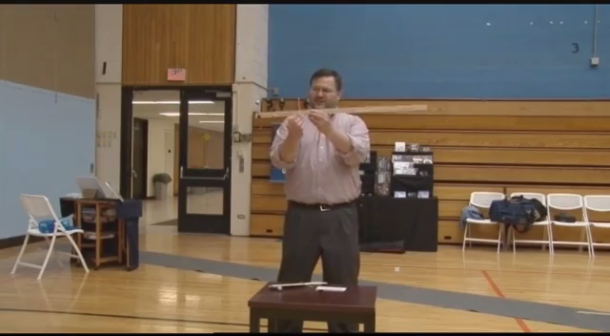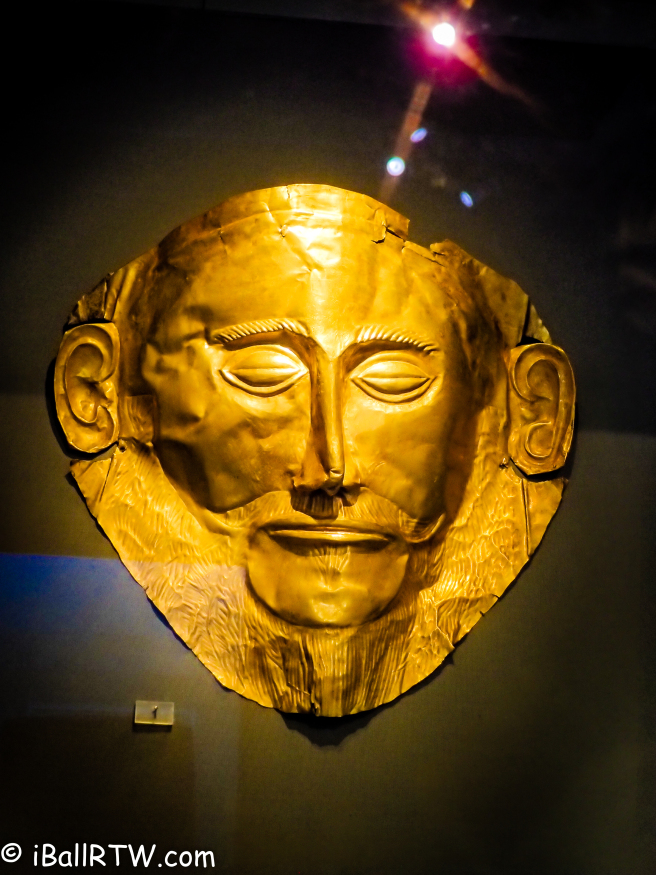
Dr. Kevin Williams, director of the Whitworth Ferguson Planetarium at Buffalo State, speaks at a training session for the Great American Eclipse of 2017.
Edwin J. Viera & Cheich Toure
thebuffaloreview@gmail.com
(Buffalo, N.Y.) — For the first time in nearly 100 years, the shadow of the moon will move across the entire continental U.S., which has been dubbed the Great American Eclipse of 2017.
On April 20, educators at the SUNY Buffalo State Whitworth Ferguson Planetarium held a training session in preparation for the solar eclipse that will occur August 21.
An estimated 50 million Americans, from Oregon to South Carolina, live in the 70-mile-wide “path of totality” and will experience a total eclipse.
In western New York, residents will see a partial eclipse in which about 77 percent of the sun will be obscured by the moon.
“It’s a huge event,” said Dr. Kevin Williams, associate professor of Earth sciences and director of the Whitworth Ferguson Planetarium. “Hotels in the path of this year’s eclipse have been booked for months, even years.”
Williams appeared on the Buffalo Review April 24 to discuss the event.
“This eclipse is especially important, because it’s visible from across a wide swath of the United States, and a lot of people will see the total solar eclipse,” he said.
Solar eclipses are fairly common, but they are only visible from certain parts of the Earth. “The last time there was a solar eclipse, was actually last year, but we couldn’t see it from here in western New York,” said Williams.
The training session was held April 20, he said, because the sun followed a near similar path in the sky that it will follow during the eclipse.
The training allowed educators to learn tactics they could use in their classes, including using a yardstick, binder clips, rulers and models of the Earth and sun to demonstrate the eclipse.
“What we are doing is offering a refresher course for educators. That’s the teachers, people from museums, people that are going to have anything to do with the eclipse and interacting with the public,” said Tim Collins, a lecturer from the Whitworth Ferguson Planetarium.
“We are just giving them some tips on what they are going to be able to talk about, giving some demonstrations that they can do for their audiences and just have a good time.”
Collins said it’s important for educators to understand the timing and mechanics of the eclipse so they can relay that information to others.
“The eclipse will only last a few minutes,” said Collins. “But it’s a very rare event that is well worth seeing. For those who are traveling, it’s going to be a wonderful experience. Even if you’re not traveling and you do get a chance to see a partial eclipse, that is an amazing sight.”
However, western New York will be in the path of totality during a solar eclipse that will occur in 2024.
“We’re working with the Buffalo Eclipse Consortium to prepare for this summer’s eclipse and develop partnerships for 2024,” said Williams.
He said it’s important for people to prepare, if they plan to view the eclipse.
“When you look at an eclipse without safety equipment, you are looking at the sun like you would on a normal day and that can ruin your eyes,” said Williams.
Thus, it shouldn’t be viewed without wearing eclipse glasses.
“The experience of seeing a total solar eclipse, being so different from a partial eclipse as will see here (in Buffalo) is worth it,” he said. “Do it at least once in your lifetime.”
The Whitworth Ferguson Planetarium is planning to hold an event every Saturday from July 29 to August 26 in preparation for the Great American Solar Eclipse.
Advertisements Share this:




